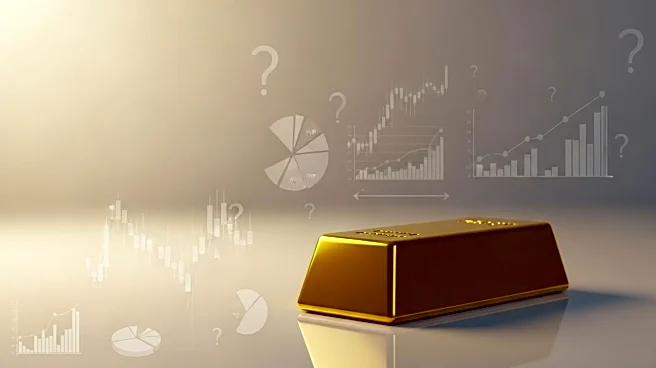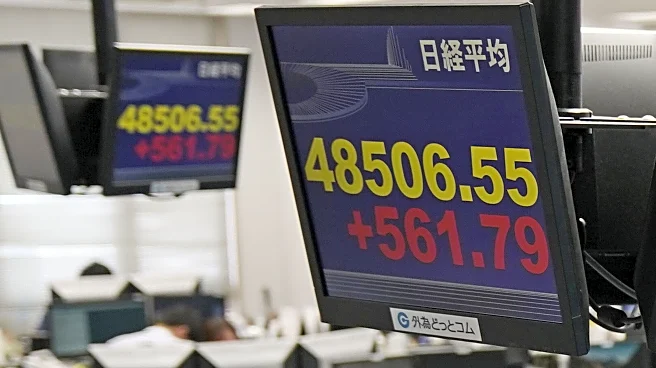What is the story about?
What's Happening?
Gold prices have reached $4,000 an ounce for the first time, marking a 54% increase this year. This surge is attributed to economic uncertainty and market stress, with investors turning to gold as a store of value. The weak U.S. dollar has also contributed, making gold more attractive to international buyers. The demand for gold-backed exchange-traded funds (ETFs) has surged, recording their biggest month ever for investor buying in September. Experts caution against overinvestment in gold, suggesting it should comprise only a small portion of portfolios.
Why It's Important?
The rise in gold prices reflects broader economic concerns and investor behavior during uncertain times. Gold's role as a diversification tool is emphasized, providing a hedge against traditional stocks and bonds. However, experts warn that excessive investment in gold could be risky, especially if the U.S. economy strengthens and the dollar rebounds. This situation impacts investors, financial markets, and economic policy, highlighting the need for balanced investment strategies.
What's Next?
The future of gold prices will depend on economic conditions and currency movements. If the U.S. economy remains resilient, a stronger dollar could limit further gains in gold prices. Investors will need to assess their portfolios carefully, considering the risks and benefits of gold investment. Market analysts will continue to monitor these developments, providing guidance on optimal investment strategies.
Beyond the Headlines
The surge in gold prices underscores the importance of diversification in investment portfolios. It also highlights the interconnectedness of global markets, where currency fluctuations and geopolitical events can significantly impact commodity prices. The role of central banks, such as China's, in stockpiling gold further illustrates strategic shifts in global economic policies.
AI Generated Content
Do you find this article useful?














